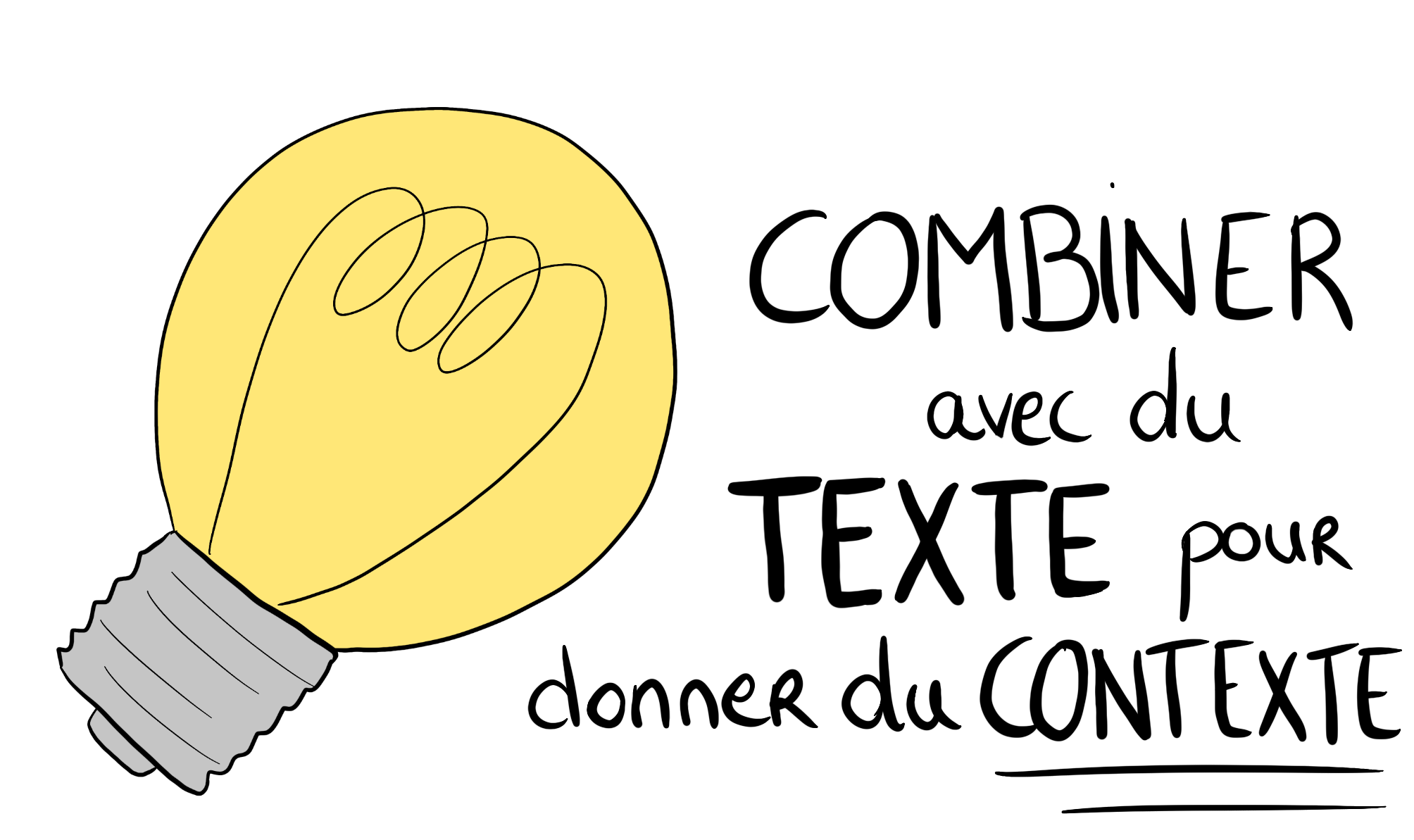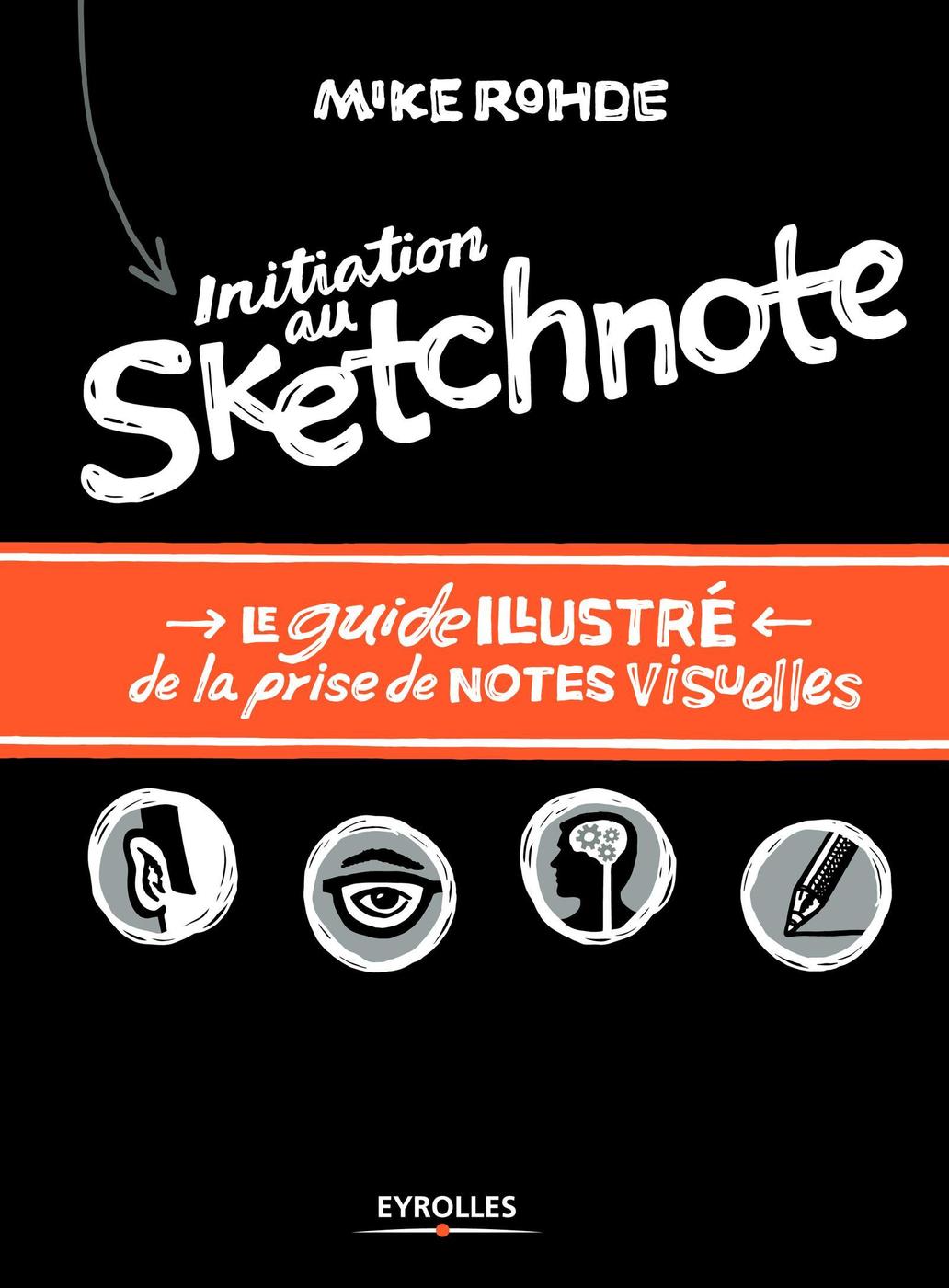Sketchnote Initiation
For those who follow me on Twitter or met me at conferences, you've probably seen Sketchnotes that I shared. What is it exactly? What's the point? Wanna do it too?
Sketchnote Initiation
But... What's a sketchnote already?
Composed of two words: Sketch and Note, the Sketchnote is nothing but a drawing, a visual representation of a note-taking containing both drawings and text. It's a graphic facilitation technique, often used by agile coaches (who happen to be the ones who initially trained me).
Today there are many training resources, and it does not require any particular skill. One might believe that it requires knowing how to draw or write correctly. It is in fact an extremely accessible technique!
If you know how to write, draw squares / rectangles / circles / triangles, you will know how to make a sketchnote!
Our brain does not work in a linear fashion. Sketchnotes, in addition to being visually more attractive, offer a more opened and free organization of information, and sometimes more representative of what we are trying to transcribe.
What's the point?
The visual representation of a concept captures the reader's attention more effectively than a block of text would. The primary interests are the attraction and retention of information.
For ourselves
To transcribe the information in visual form, our brain naturally does all the work of appropriating the information; we capture the information, understand it, synthesize it, and then find a personal and visual way to place it in a sketchnote. It facilitates the memorization of information.
It's also a great way to work on your creativity (calling all notebook doodlers!), and a real pleasure to create. It is also with more pleasure and ease that we will reread notes written in the form of a sketchnote!
For all these reasons, sketchnote is a great way to learn - and if I ever had to take lessons again, I know this would be my new way to take notes!
Finally, a sketchnote is a representation of the important concepts among the information that the one captures. Two people reading or listening to the same thing will never produce the same sketchnote, and probably will not transcribe 100% the same information!
To share
Sharing your sketchnotes is totally optional but can be a motivational source for you to refine your research and your work. This helps to share information effectively and the people who read it will also retain the information better!
For simple notes (announcement, event, specific information), readers will remember better. For more complete or complex notes, and it allows people who will read to understand the information more easily, with less cognitive load.
What does it apply to
Simply: To absolutely everything!
As mentioned above, it is an extraordinary way to learn and retain information, so perfect for revision sheets for example. I use this technique to take notes during technical conferences (usually live), or to express concepts (recently on design patterns).
But in fact, we could also use it to make summaries of books, films, speeches, and why not even cooking recipes!
I want to try too!
So get your pens! You don't need a lot of materials to get started:
- Leaves
- Markers or pens: ideally one black and one or two primary colors
It also works with a digital tablet with a drawing application.
Let's see the basic elements of a Sketchnote. For each of the categories mentioned, do not hesitate to reproduce the examples and to create your own library of the elements that you like in order to use them more regularly.
1. Pictograms
Icons and emojis are an integral part of our lives now! And it is only natural that we can (must!) use them in a sketchnote. In addition to capturing attention, they convey meaning.
There are a multitude of pictograms that you can use and which are easy to draw because they are based on basic geometric shapes.
Characters are also great sources of icons to use and easy to draw. Moreover, a happy or sad character also instinctively leads readers to be more responsive.
| Calendar | Goal | Group | Time | Warning |
|---|---|---|---|---|
 |  |  |  |  |
2. Text
Images alone are not enough to convey information. Adding text is essential to provide sufficient context to complete the information. Combining a pictogram and text adds context for example!

Text translation: Combine with text to provide context.
Ideally, the text should be as readable as possible. A simple way to achieve this is to use capital letters, tightly packed together.
Once sufficiently comfortable, it is possible to use special fonts; a world of infinite possibilities then opens up to you!

Text translation: Capitalized, regular and well tight. Large, Font, Handwritten, Underligned, Bold (not to be abused!)
3. list with bullet points
In a sketchnote, we try to arrange the information effectively. In the case of a list, we can then use a variety of bullet points. No rule to follow, choose the ones you like or that make sense in your context!

4. Provide a flow with arrows
Sometimes essential to bring from one idea / block to another, or to define a reading flow, the arrows are faithful allies to any budding sketchnoter.

5. Categorize in containers
No we're not talking about Kubernetes here, sorry 😂
They make it possible to group information that is related to each other. It is simply a matter of categorizing and putting this information into boxes.
Again, lots of container possibilities! You can also choose to frame a main title to highlight it.

6. Add volume and emphasis with color and shadow
Choosing one, two or three main colors per sketchnote is ideal because they allow you to add a visually pleasing touch and emphasize important elements.
The colors are placed on fonts, containers, arrows or pictograms for example.
Shadows help to give volume to elements and make them stand out. They can be gray or colored, internal or external.
7. Consistent structure
This is the part that I find the most difficult to apprehend. The white sheet on which we know what we want to write but we don't know how to place the blocks in relation to each other. This exercise is even more complex when taking notes in live.
If you already know how the information is structured, you can start directly or define areas in pencil. For example in the case of an idea around which gravitates information, a mindmap works well. If, on the other hand, the plan is composed of 3 parts, you can already mentally divide the sheet into 3 vertical or horizontal zones.

If you don't know the outline or information to write in advance, here's how I go about it in a conference
- I write the title at the top and place it in a container to highlight it. If I know the theme and title in advance, I prepare the sketchnote with these elements!
- if the plan is given in the introduction, I mentally prepare areas (however this is rarely the case!)
- when the speaker talks about a concept, I extract the title and capture all the essential elements that I transcribe in the form of an association picto + text or bullet points
- if I'm overwhelmed, I take notes in pencil and come back to them later
- finally, and if it can reassure you, I sometimes screw up, end up taking notes in bulk and starting all over again at 0 at the end of the talk 😅
Example of a live sketchnote
Probably not the first exercise I would recommend for beginners, but definitely challenging and interesting, taking notes live is difficult but rewarding. I am easily distracted, and this allows me to focus on the entirety of a talk or a meeting.
Here is an example of a live note taking of a 3 hour conference given by Jordan Nourry, Adrien Joly and Julien Topçu at Devoxx France 2022 (Video of the conference)
Resources
On the training side, I first had an initiation with agile coaches who explained to me the basics explained in the previous section.
There are also books by Mike Rohde (founder of the concept of sketchnotes) which are excellent resources to start or improve your knowledge.


Conclusion
Although it may seem daunting from afar, GO FOR IT! It's an exceptional and fun way to take notes, retain information and share it effectively.
Make your dictionary of pictograms, fonts, containers, try things and above all, have fun!